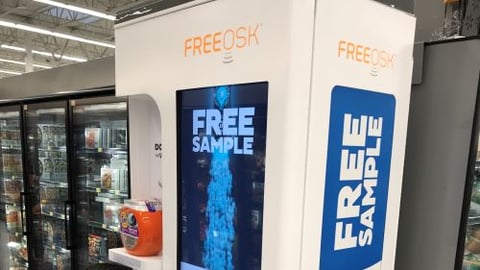Unlock Perimeter Potential With These Brand-Building Ideas
The perimeter is becoming the most important part of any supermarket. So why is it still the least branded?
The center of your store is a kaleidoscope of packaging, signage and other impressions aimed at capturing a shopper’s attention. It’s the realm of Heinz, French’s, Oreo and Ben & Jerry’s. Out on the perimeter — save for the occasional box of spring mix — brand takes a backseat to product.
But grocers have good reason to rethink this status quo.
As Americans continue the shift toward buying center store items online, the perception of the perimeter will increasingly determine where shoppers buy groceries in person.
Food is now a much bigger focal point across our industry. Remember when c-stores were synonymous with that shriveled hot dog on a roller? Now the likes of Sheetz continue to bring in fresh produce and ramp up their prepared meals. Having made big gains in the breakfast and lunch dayparts, convenience retailers are even going after dinner, the traditional preserve of the grocery perimeter.
In today’s foodie-friendly culture, your perimeter must stand out. But even today, some grocers’ perimeters are right out of the 1970s, with apples, onions and potatoes piled unceremoniously in the bulk bins. They should take a page from other operators, which celebrate this part of the store through deft use of natural colors, elevated approaches to merchandising — think stacking apples in a pyramid — and owned-brand portfolios that include fruits, vegetables and other perimeter categories.
Here are a few other considerations to guide your use of the power of branding and design to re-energize your stores’ perimeter.
Tell the Untold Stories
In the center of the store, every package is an individual medium of communication. On top of that, the colors, logos, graphics, photos and other visual cues combine to create a powerful secondary message about the store as a whole. At a mainline supermarket, that could be something like “We have all your favorite brands in every category, and it’s all clean, neatly arranged and easy to find.” At a specialty grocer like Trader Joe’s, the message is: “Our products are different and fun. We give you the novelty you crave.”
By comparison, a refrigerated display case full of beets, broccoli and Brussels sprouts may seem to lack any medium for your message. The apples already have stickers on them, right? And Halos Mandarins are available just about everywhere. Where’s the branding opportunity for the grocer?
Look for the untold stories about the products already available at your stores. U.S. Prime is the highest of eight quality levels for beef. Are you celebrating its availability at your meat counter? What about Wagyu beef from Japan? If something is special in any way, make sure that your customers are getting that message. Think cheering strategies, not weighted labels.
The seasonality of produce creates huge storytelling opportunities as well. Are you exploiting it to the fullest?
Of course, the origins of your meat and produce may be well worth promoting. Even onions can make for a good protagonist if they hail from a fourth-generation farm in Vidalia, Ga.
Tie Those Stories to Your Brand
While these types of stories are there waiting to be discovered at most supermarkets, once you find them, the critical next step is to tie them to your retail brand. Both Wegmans Food Markets Inc. and Whole Foods Market have done a good job of this. Wegmans' legendary chief executive, Robert B. Wegman, once co-starred with employees in TV spots touting the company’s fruits and vegetables. Whole Foods, meanwhile, educates customers about its deals with local operators such as White Oak Pastures, a 152-year-old family farm in Bluffton, Ga.
These types of co-branding relationships allow you to do branded display-case signage and create posters, social media posts, emails, newsletter articles and more featuring the story of your relationship with that special operator. You could even hold events such as tastings or live-streamed Q&As with the farmer.
Look for ways to improve the perimeter offering itself through these relationships. White Oak Pastures, for example, sells its own branded beef jerky, tallow, barbecue rubs and other products — the types of SKUs that, if woven into a grocer’s perimeter offering, could reinforce the sense of quality and diversity.
Consumers no longer give any credence to generalized assertions along the lines of “We sell only the freshest produce available.” If you give them vivid details about your products and suppliers — real-world stories full of places and names —they will give you the credit you deserve.







